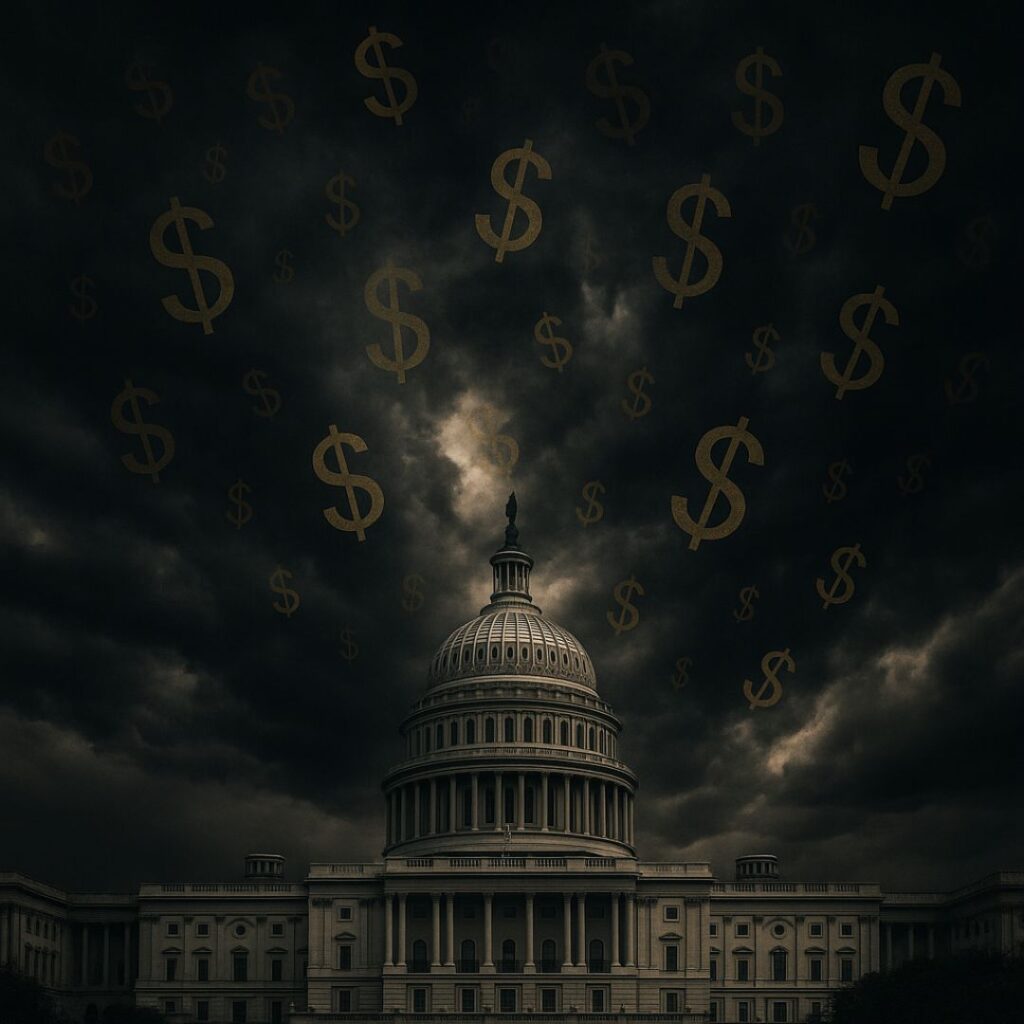When debts grow faster than growth, something breaks first.
The Big Beautiful Bill and America’s Growing Debt Spiral
In May 2025, the Trump administration passed the One Big Beautiful Bill Act through the House by a single vote. Over 1,000 pages long, it fast-tracked sweeping changes to tax policy, spending, and the debt ceiling. Officially billed as a pathway to prosperity and growth, it has instead raised alarms over fiscal sustainability and institutional credibility.
- May 2025: Passed 215–214 in the House. Over $3.8 trillion in tax cuts, including making the 2017 cuts permanent and excluding tips, overtime, and interest on select car loans.
- Debt Ceiling Raised: Lifts the cap by another $4 trillion. National debt is projected to exceed $40 trillion before the decade ends.
- Temporary Gimmicks: Key benefits expire in 2028 to lower the bill’s official cost, though they are likely to be extended politically.
- Spending Cuts: Includes $1 trillion in cuts to Medicaid, food aid, and civil service programs. Critics call the savings overstated and poorly documented.
- Bond Market Response: Investors sold off Treasuries. Yields spiked. Borrowing costs rose sharply for both government and public institutions.
- Musk’s “Doge” Exit: Elon Musk, brought in to root out waste, left in May after verifiable savings fell far short of claims. The White House had relied on Doge to justify offsetting costs.
- Senate Uncertainty: GOP senators are divided: some oppose Medicaid cuts, others say the bill doesn’t cut enough. A clean passage before July 4 is unlikely.
The bill’s core promise, to stimulate growth while reducing deficits, relies on optimistic projections for import tariffs, economic acceleration, and enforcement savings. But independent groups like the Committee for a Responsible Federal Budget and the Tax Foundation estimate the bill could increase deficits by $2.6 to $3.0 trillion over the next decade, even after accounting for cuts.
Behind the numbers is a deeper problem: the erosion of fiscal discipline. Nearly every recent administration has raised the debt ceiling without structural reform. What makes the 2025 bill notable is the scale and speed of its ambition, and the open dismissal of conventional accounting methods. When even internal allies like Musk publicly disown the results, credibility falters further.
What Happens Next
Senate Republicans now hold the bill’s fate. Some demand deeper cuts. Others refuse to touch social programs. Trump himself has sent mixed signals, supporting the bill publicly while urging senators not to cut Medicaid behind closed doors. If the Senate demands changes, the bill returns to the House. If not, it risks dying in committee.
Meanwhile, debt service has overtaken defense spending. Interest payments alone reached $881 billion in 2024. With higher yields and more debt, that number will only rise. A fiscal spiral begins when a government must borrow to pay interest on previous borrowing, making each new round of borrowing more expensive.
If confidence continues to slip, it won’t just be bondholders who notice. Everything from state pensions to currency reserves depends on the perceived stability of US public finance. And if that trust cracks, the ripple effects will reach far beyond Washington.
The bill may pass. The numbers won’t. Long-term solvency remains unresolved, and alternatives are gaining attention.

